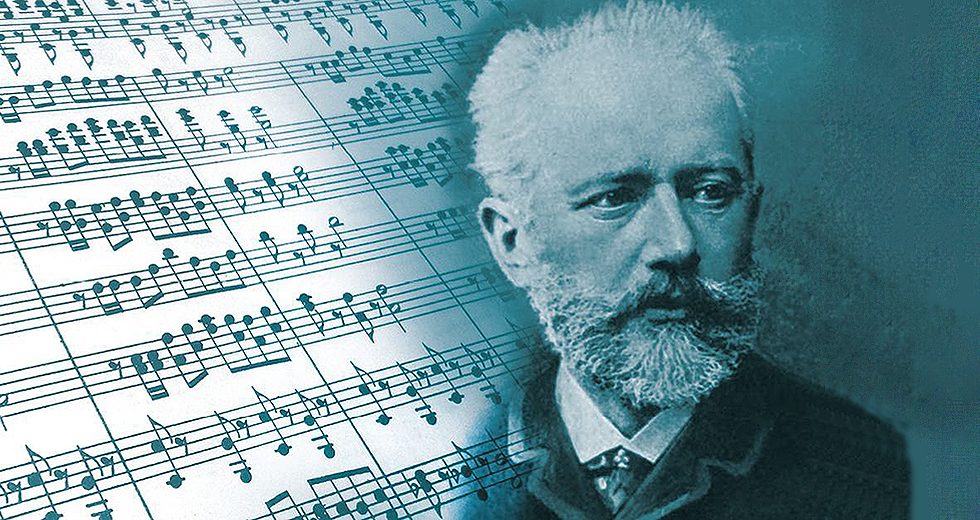
Even though many of Piotr Ilyich Tchaikovsky’s beloved masterpieces like Swan Lake, Romeo and Juliet and the 1812 Overture are regularly heard in concert halls, an argument can be made that the 19th-century Russian composer’s works remain in some ways underappreciated. Indeed, Philip Ross Bullock, author of the 2016 biography, Piotr Tchaikovsky, argues that the composer’s popularity has actually worked against him.
“He is undervalued but perhaps overexposed in some ways,” said Bullock, a professor of Russian literature and music at Oxford University’s Wadham College. “His very popularity, these warhorses, the First Piano Concerto, the [Sonata] Pathetique, become so familiar that people stop hearing them in original ways.”
To commemorate the 125th anniversary of the composer’s death, the Chicago Symphony Orchestra will present multiple performances of his works this season. The CSO concerts start Nov. 15-18 when soloist Alexander Gavrylyuk is featured in the composer’s Piano Concerto No. 1 and end June 13-15 with the Orchestral Suite No. 3. In addition, the West-Eastern Divan Orchestra will perform the Symphony No. 5 when the ensemble appears Nov. 5 as part of the Symphony Center Presents series.
“Tchaikovsky is perennially interesting,” Bullock said, “but anniversaries of births and deaths always give a particular reason to look at a composer.”

British scholar Philip Ross Bullock contends that Tchaikovsky’s popularity has actually worked against him.
A member of the academic advisory board of the International Tchaikovsky Society, Bullock offered three other reasons for the under-assessment of the composer. For starters, Tchaikovsky (1840-1893) was once subject to what the scholar called a “moral squeamishness” — a distancing by certain academics and others because of his homosexuality and now-outdated notions of how his private life affected his music. “I think that’s not been true for a long time, academically speaking,” Bullock said. “We’ve learned to rehear him.”
Second, Tchaikovsky was a more modern composer than some might think. Mahler was another composer who was discounted for decades after his death in 1911, and then starting in the 1950s and ‘60s with the efforts of Leonard Bernstein and others, he began to be seen as a modern master. “Mahler conducted Tchaikovsky at the Vienna Opera House and at the Met when he came to the United States,” Bullock said. “Mahler learned to be Mahler by listening to what Tchaikovsky did to symphonic form.” In his Sixth Symphony, for example, Tchaikovsky broke from tradition and put the movements in the “wrong” order, much as Mahler did in his Ninth Symphony.
“But we always forget to put Tchaikovsky in that place in music history as someone who took us from the 19th century,” he said, “and then ushered in the symphonic practices of Mahler, of Elgar, in many ways, of Shostakovich in the Russian tradition and Sibelius in the Finnish tradition.”
Finally, Tchaikovsky was his own worst enemy. He was self-deprecating about his abilities as a composer. “It’s all rubbish,” Bullock said. “He was a brilliant symphonist.” But the self-criticism, often taken out of context, has affected the way critics view his work.
Among the qualities that have made Tchaikovsky’s music so memorable is his gift for melody. Notable examples can be found across his output, especially what Bullock called his “extraordinary lyrical outpourings” in many of his slow movements, such as that in the Symphony No. 5. The composer wrote 10 operas and more than 100 art songs, and the expressive qualities heard in those pieces often carry over to his instrumental works, as indicated by such markings as “cantabile,” “cantando” or “espressivo.”
Bullock also praised Tchaikovsky’s “winning way” with titles, programs (a pre-conceived theme or narrative) and particularly, hints of programs, where the composer deliberately withheld details from the audience. “So he engages our capacity as a listener to imagine,” he said. Romeo and Juliet and Francesca da Rimini (an 1876 ode to the famed story from Dante’s Divine Comedy) clearly have narratives, but Tchaikovsky’s programmatic intent for the Fifth and Sixth Symphonies remains unclear, despite scholars’ eager efforts to uncover it. “What’s fascinating is the way that Tchaikovsky can use that hint of a story, hint of a personality, to make us do the work, to fill in the gaps and to imagine while we’re listening.”
Although Tchaikovsky’s music is overtly romantic in many ways, he had strong ties to the Classical era, and his favorite composer was Wolfgang Mozart. “When he got to see the original score of Don Giovanni, he was completely transfixed by the connection he had to the 18th century,” Bullock said. Tchaikovsky’s opera The Queen of Spades contains an intermezzo borrowed from a Mozart piano concerto, and the Orchestral Suite No. 4 (Mozartiana) is an arrangement of four works by the composer’s hero. “I think his interest in these classical forms of the 18th century, and his interest in charm, delight, order, proportion — all these things we think of with the 18th century — is often misunderstood because we tend to see him through a romantic, 19th-century prism.”
Igor Stravinsky, who turned to neo-classical music in the 1920s, was fascinated by Tchaikovsky. “It’s maybe,” Bullock said, “that we have evolved a performing tradition that emphasizes the heart-on-sleeve romanticism of Tchaikovsky’s work but sometimes we mishear or misunderstand or are not shown the works that would allow us to hear this very different side of him.”
Here is the lineup of Tchaikovsky works scheduled this season for the Chicago Symphony or programmed for Symphony Center Presents:
Dec. 13-15, Symphony No. 6 in B Minor, Op. 74 (Pathetique), Michael Tilson Thomas, conductor, and Feb. 14-16, Symphony No. 1 in G Minor, Op. 13 (Winter Dreams), Pablo Heras-Casado, conductor. Nov. 5, West-Eastern Divan Orchestra, Symphony No. 5 in E Minor, Op. 64, Daniel Barenboim, conductor.
The Fourth, Fifth and Sixth symphonies of Tchaikovsky are the most frequently heard of the composer’s six numbered works in the form, with the Fifth probably performed more than any other. The Symphony No. 1 was written in 1866 when he moved to Moscow to take a teaching post at the conservatory there. “It’s what a young composer should do,” Bullock said. “You write string quartets, which he does. You write symphonies, which he does. And you write an opera. He tried his hand at all the great genres.” All the movements were performed separately before he finally presented the whole concerto to the public, and it became an immediate success.
The work is subtitled Winter Dreams, and the first two movements carry thematic titles as well. “So he is already infusing the symphony with some kind of program, some kind of extra-musical element,” Bullock said. The scholar calls it the first great Russian symphony. “It’s an amazing debut,” he said. “But he’s looking back to Beethoven. He’s looking to Schubert, and he’s trying to use all the training he had at the St. Petersburg Conservatory.”
Nov. 15-18, Piano Concerto No 1 in B-flat Minor, Op. 23, Thomas Søndergärd, conductor, and Alexander Gavrylyuk, pianist.
In 2015, Kirill Gerstein became the first pianist to record a newly published urtext or original edition of Tchaikovsky’s 1879 version of this famed concerto, and that version has become increasingly popular with many other soloists. The famed version that listeners know so well is actually the 1894 edition of the concerto, which was possibly instigated by Alexander Siloti, a student of the composer. In a 2015 Sounds and Stories interview, Gerstein argued that this flashier take distorted Tchaikovsky’s intentions, making the work “louder and more bombastic,” with modified tempos and articulations and an entire section cut from the third movement. Bullock does not feel he is in a position to answer the many questions that still swirl around these two editions. “But I think this so-called original version is catching on in some ways,” he said. “It’s interesting, because it is allowing us to re-hear a real warhorse in new ways.”
June 13-15, Orchestral Suite No. 3 in G Major, Op. 55, Riccardo Muti, conductor.
After writing his Symphony No. 4 in 1877-78, Tchaikovsky stepped away from the form for more than a decade. During this time, he turned his attention to the orchestral suite, creating four works in the form. “The suite gives him a kind of liberty, because it’s not a symphony,” Bullock said. “It doesn’t have to have the same number of movements. It doesn’t have to have sonata form. It can do what he likes in a symphony. The orchestral suite is a very experimental genre.” Indeed, the scholar described the orchestral suites as a “creative laboratory” out of which the composer’s later symphonies and ballets would come, the two forms very much influencing each other. “They are incredible pieces — much underplayed,” he said. Tchaikovsky conducted the Suite No. 3 frequently, and it was very popular during his lifetime.